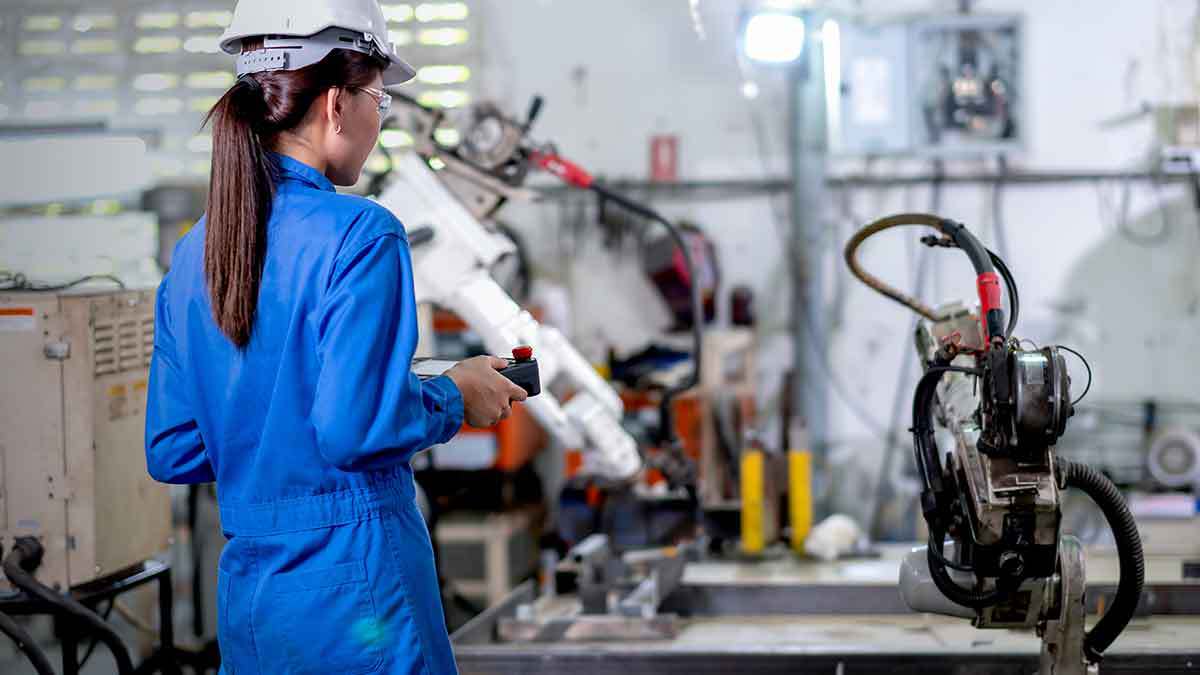Different industries pioneer change in a world that is in constant flux. They innovate, reinvent themselves, and try to find different strategies to deal with change. For example, after the pandemic, many businesses went digital and manufacturing companies were not the exception. Also, many turned to Industry 4.0 technologies to convert to automated manufacturing.
Although some of us were aware that equipment should be automated, many asked ourselves “Where do we start?” “Does it matter which machines I choose to automate?” The answer is yes. In this article, we discuss tips on how to start the Industry 4.0 journey.
Which Are the Best Areas of a Manufacturing Facility to Automate?
Automation is revolutionizing the manufacturing industry. So much so that many professionals started wondering how they can implement it or if they can complement their already automated systems. Identifying which manufacturing processes need automation is about combining challenges and solutions.
On the other hand, automation is the perfect tool to boost efficiency, productivity, and quality control. It can help optimize your facility for maximum productivity and quality and minimum waste of resources. Are you ready to identify which areas need automation?
So, Which Processes Need Automation?
The obvious places to start are the slow and inefficient areas of a manufacturing facility. Obviously, this differs from company to company, but there are some common indicators to consider, like time and materials usage.
A straightforward example of automated manufacturing is a car assembly line. Technically, every single step can be automated. However, doing it all at once is not an effective approach. Instead, managers need to carefully look into each step in the manufacturing process to know where to start and where to make improvements.

Tips on How to Decide Where to Start
Ideally, the automated manufacturing process should start in the weakest areas of a facility. The manufacturing processes that need automating are usually those that slow down the rest. It is a classic example of “a chain is only strong as its weakest link.” Start automating those processes that need the most help.
Plant managers need to examine the current condition of the facility before starting the automation process. Below are some aspects to consider after thorough inspection:
- Bottlenecks are another red flag that can potentially disrupt the whole manufacturing process. The inefficient processes that precede the bottleneck are replicated and the processes that follow waste time and materials. Each product that is manufactured will require more time and money. With OEEasy you will be able to identify bottlenecks before they happen and prevent potential problems.
- High error rates: A key indicator that manufacturing processes need automating is a high error rate. For example, a plant manager may notice that the packing process is slower than average and that it is using more plastic and cardboard than estimated. The high error rates and wastage are red flags that cost money, energy, and materials. Implementing automated manufacturing processes could easily solve these challenges.
Summing up, Industry 4.0 is taking manufacturing by storm. It is never a bad time to start optimizing certain processes. The best way to begin is to examine closely the effectiveness of the plant as a whole. Thorough analysis will show which machines are underperforming, which processes are causing delays, and where you waste resources.
How 4i Platform Can Help With Your Automated Manufacturing Needs
At 4i Platform, we like to view these as opportunities to innovate rather than failures. We offer tools like OEEasy, which measures OEE in real time allowing for decisions that will impact positively on efficiency. Or Cenergy, which monitors energy consumption and allows you to allocate it where you need it the most.
Our tools help plant managers to optimize processes easily and to visualize the information from any device, improving processes as a result. Thanks to improved efficiency, precision, and quality, automation can turn any manufacturing plant into a productivity and quality powerhouse.





